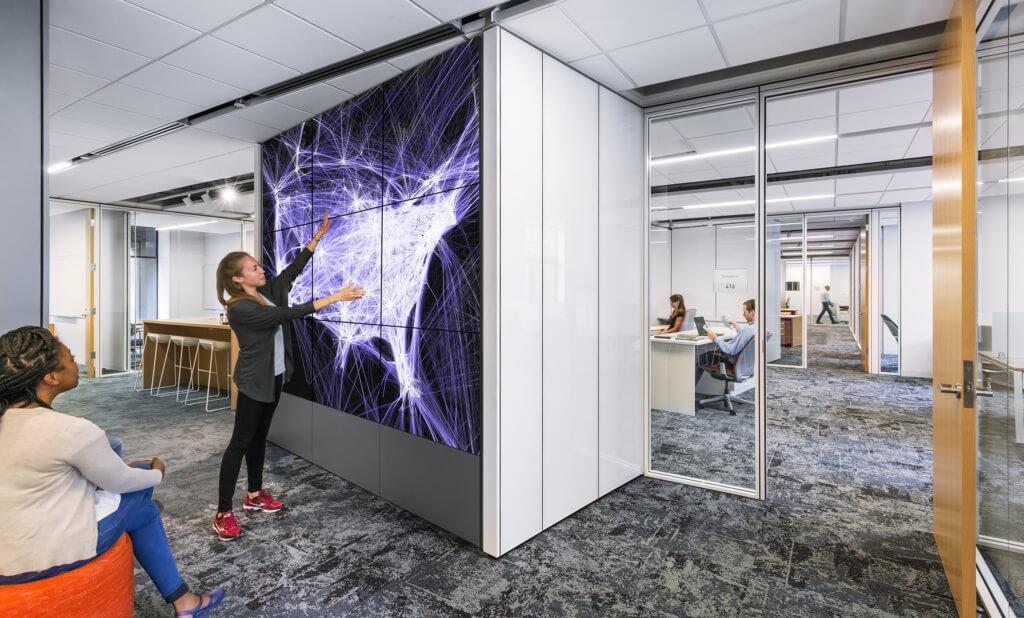The transition to remote work has been almost seamless thanks to our IT group. We spoke with Director of Information Technology Dan Gallivan about the changes and challenges of this new paradigm.
How is the work of you and your team different now that everyone is working from home?
Overall, the day is not that different, but it is longer. Since everyone’s hours are different, we find ourselves online supporting staff an additional two hours or more per day. When we are in the office, the commute to and from work takes less time, so that helps. However, whether we are in the physical office or working from home, it is harder to learn when to disconnect at the end of the day. We no longer have the visual cues of our co-workers leaving or the setting sun to help recognize that it is time to call it day. It is a little more difficult for us to find personal downtime without the breaks that would typically occur during a “normal” workday. We are on duty any time the phone rings or an email arrives in our Inbox. Web calls happen, even at 6:30 on a Saturday morning. Our team is generally connected to the systems we monitor 24 hours a day, 7 days a week.
How does your department prepare for these kinds of unprecedented, unexpected events?
We do a lot of business continuity and disaster recovery planning in most technology projects. We think about scalability, backup and redundancy. We even run drills and role play scenarios to test systems and plans. Most often we plan for the physical interruption like a failed circuit or storage and network equipment, winter storms and hurricanes. Being in the Northeast, weather disruptions are common, and we are often thinking about related floods, fire, terrorism and cyber threats. This one is clearly different – while we have a functional, operational space, there are no people in that space.
In what ways do you see architecture firms adapting to our new situation?
Even before the current situation, architecture has been trying to adapt to remote work. Architecture is a learning profession. You are always learning; early in your career, mid-way through and even when teaching and mentoring in later years. Growth and experience develop through the studio experience – beginning as a student, then intern, young designer, licensed architect and finally an experienced, seasoned principal. You never stop learning and never stop teaching each other.
The studio experience is hard to replicate because so much of it occurs at unscripted times. Creating that experience in our current situation means finding ways to make web meetings more collaborative and finding the best tools to connect people virtually. These tools need to enable people to share ideas and allow for quick, impromptu connections, mimicking the studio experience as much as possible. How we sketch out an idea or create a study model for exploration and discussion needs to be done in new ways; or done traditionally but with new technology platforms for sharing and discussion.
A member of IT team is physically in the office each day. Is this for routine tasks or to be available when unexpected issues arise?
Yes, we are in the office for both routine things and unexpected issues. We have routine maintenance system tasks to perform and monitor. And there is always “unplanned” work that pops up in our day, the urgent calls for help. Everyone’s emergency is our emergency.
What are some best practices that you and your team encourage us all to do?
Right now, the number one issue that requires greater vigilance is internet security. As a standard practice, we run a lot of awareness campaigns about best practices for internet safety. We always want staff to be aware, but right now the risks and potential vulnerabilities are greater than ever. Due to remote work, known contacts who previously connected one way, may connect in different ways. Those looking to engage in cyber-crime and disruption will take advantage of this, and the consequences could be catastrophic if they are successful. Now more than ever, we encourage staff to “think before you click” and follow best practices for every email you read, website you visit and document you open.
What will work life be like in two months from now from your point of view? 6 months? A year?
I believe the transition back to the studio office space will be a slow one. If you have a twenty-person team and one person needs to continue working remotely, the entire team needs to “think” remote and use tools that will connect and integrate that person who is not in the office . We must learn and adapt as we go. Acknowledge that what may have worked well before in person, may not work as well when team members are remote. If something did not work well for one meeting, reach out and ask for tips to help with the next one. Share what worked well with other teams and integrate those tools into your process. Set agendas for meetings ahead of time so time is not wasted.
For those who missed your BSA Webinar, what was the most important take away?
Turn on your web camera, let other people see you and your surroundings. Share something with them that helps you and others connect in a different manner.
Can you tell us a story about something interesting has happened in the last 5 weeks?
Not sure if there is a single stand out story from the past weeks, but there have been a lot of more unusual requests; taking photos of study models, driving spare equipment to people’s homes, onboarding new employees in an empty office, co-workers sharing self-haircutting fails and helping my daughter 3D print her homework assignment.
Not many people know you went to architecture school. Who is your favorite architect and why?
I’m not sure I have a single favorite architect, but I do feel an appreciation for particular buildings and spaces. These include Louis Kahn’s Salk Institute, I.M. Pei’s influence throughout Boston and Olmsted’s landscapes.
Is there a question we should have asked but didn’t? What is it and what is the answer?
One question I often hear from people is “what is the best tool to do x?” and the answer is usually “it depends.” It depends on what has worked well in the past, what you are comfortable with using today or what the team has used. There is not one single tool or answer. What worked great one day for a specific task may not be best another day for a similar task. Ask for ideas and share your experiences.



